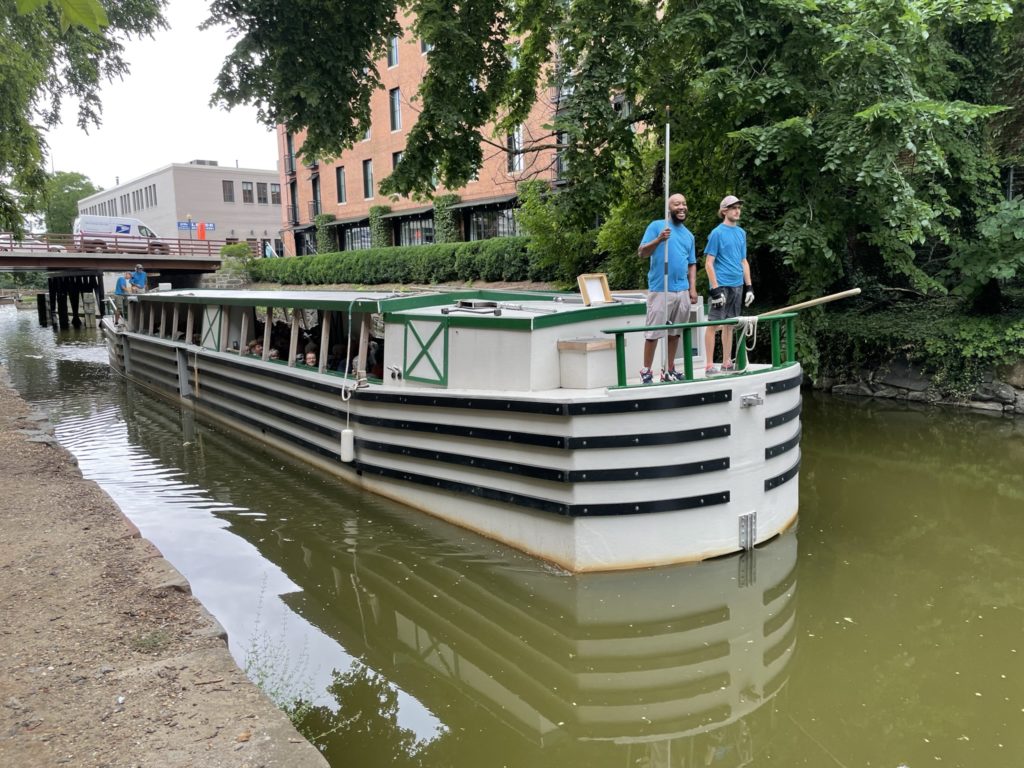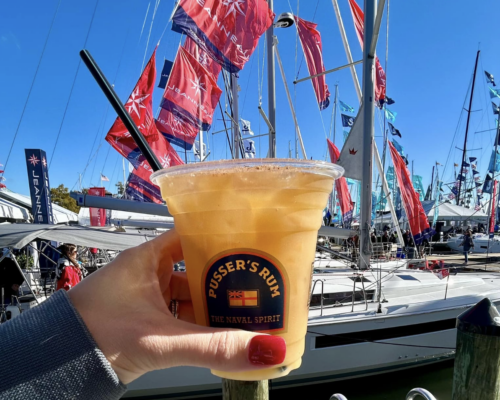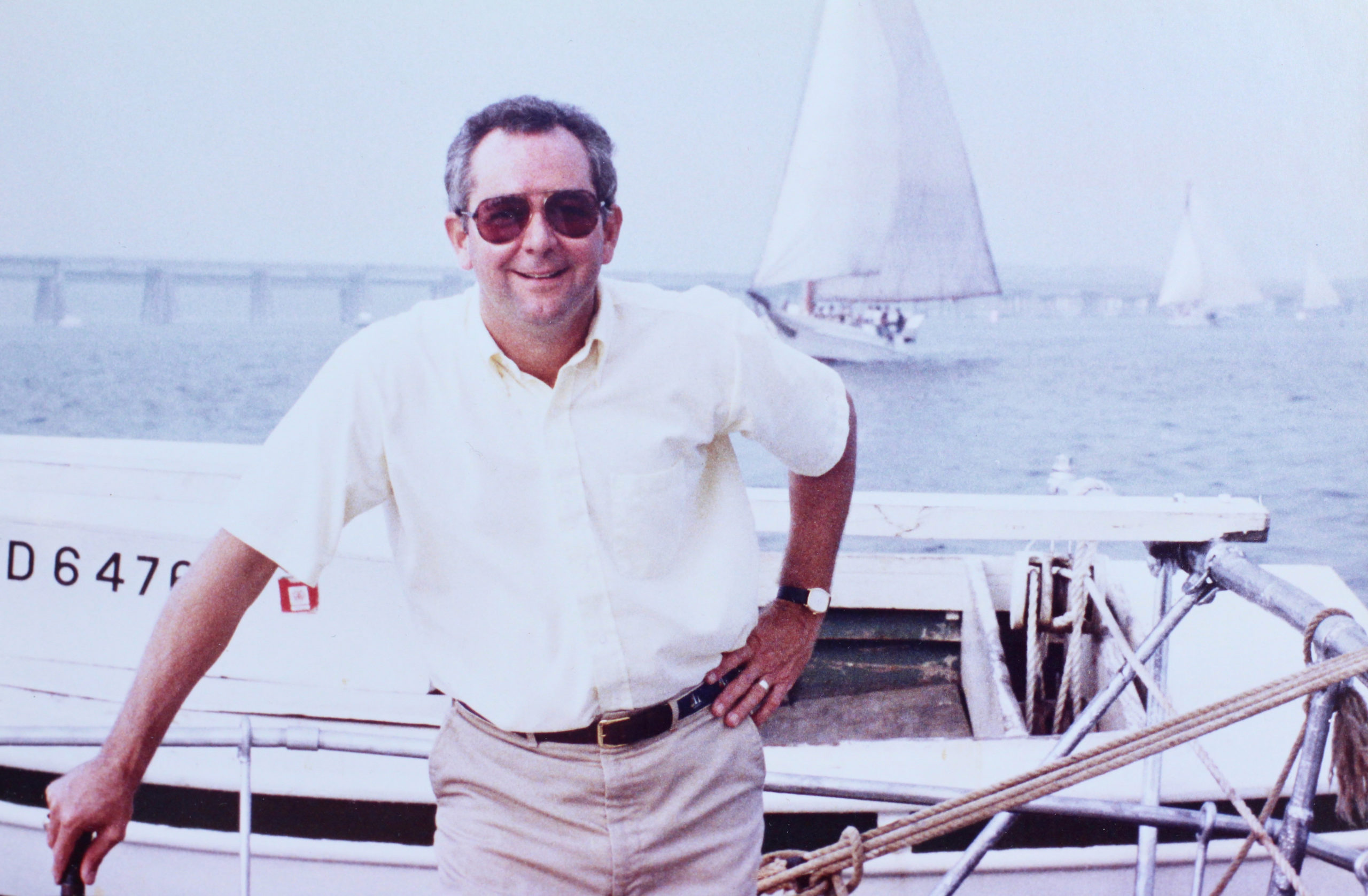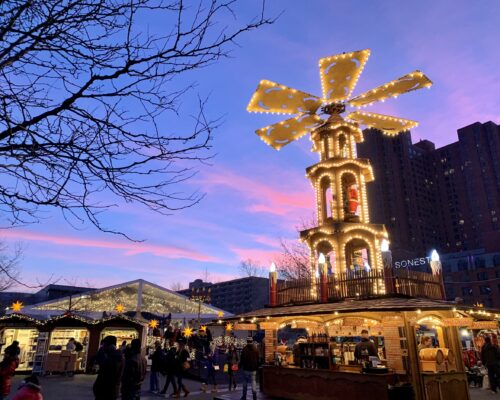A new replica provides a portal to the past.
The main attraction of the 184.5-mile-long Chesapeake & Ohio Canal National Historic Park is the towpath. Mules used to tread that path, towing barges up and down the canal. Today, the path serves as a popular hiking/biking trail between Washington, D.C., and Cumberland, Md., with connections that run over the Allegheny Mountains all the way to Pittsburgh.
But now, for just one mile of that distance, you can see firsthand how the canal was originally intended to function. Last October, the nonprofit Georgetown Heritage organization launched a $1.5 million replica of the packet boats that moved coal, grain, lumber and building stone from the mountains to the tidewater of the Chesapeake Bay for nearly 75 years. Barges like this one hauled a million tons of cargo in 1875, the canal’s peak. The new boat hauls up to 60 passengers on a one-hour tour up and back on about a half-mile of restored canal.
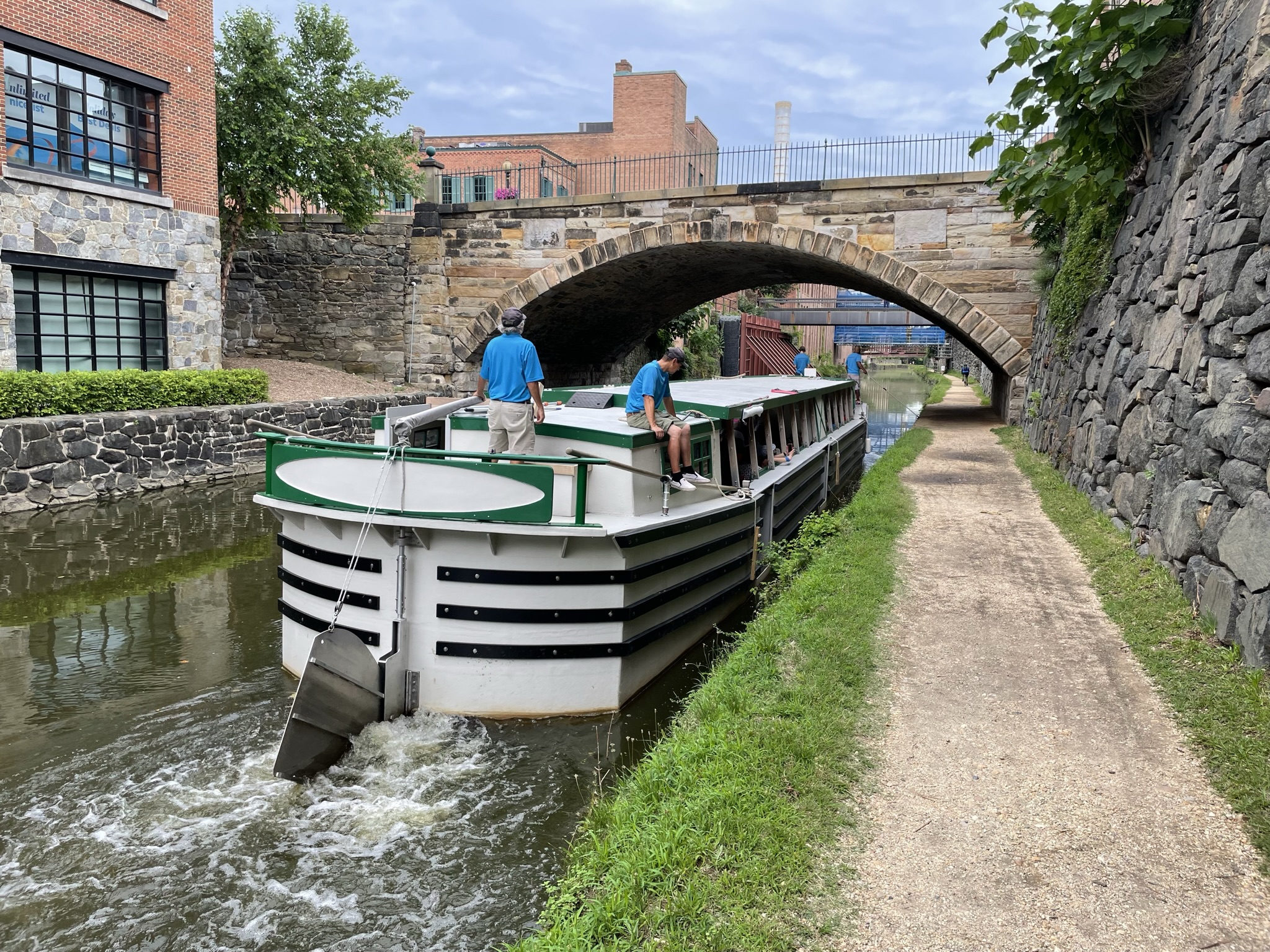
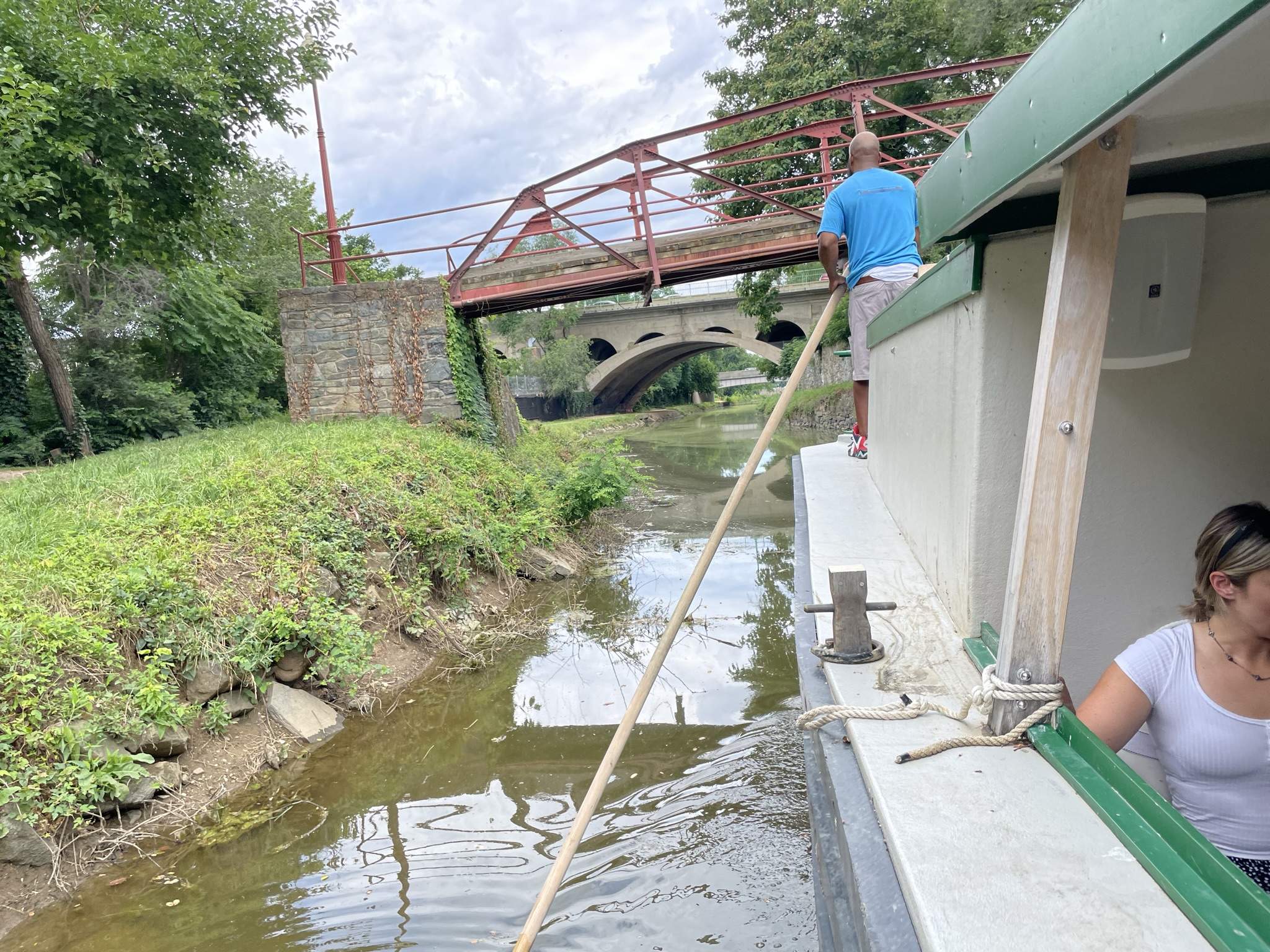
The C&O Canal became a National Historical Park in 1971. In 2011, the previous replica canal boat, The Georgetown, was damaged beyond repair and deemed inoperable. The new boat was funded by a grant from the District of Columbia and designed as a historic replica of the boats you would have seen in the 1880s, the heyday of the Canal’s commercial operation in Georgetown—with a few modern upgrades, of course.
The boat was built at the Roudebush Yacht & Engine Works shipyard outside of Baltimore. According to Capt. Bob Solomon, operations manager for Georgetown Heritage and one of the boat’s captains, the hull was built in two halves that were put together after the boat was delivered to Georgetown. Measuring 80 feet long and 12 feet wide, the boat is modeled after designs for historic packet boats that were used on the canal during its early years of service. They were built to fit into the narrow canal locks. And, like the originals, the replica “has the maneuverability of a living room couch,” Capt. Solomon says.
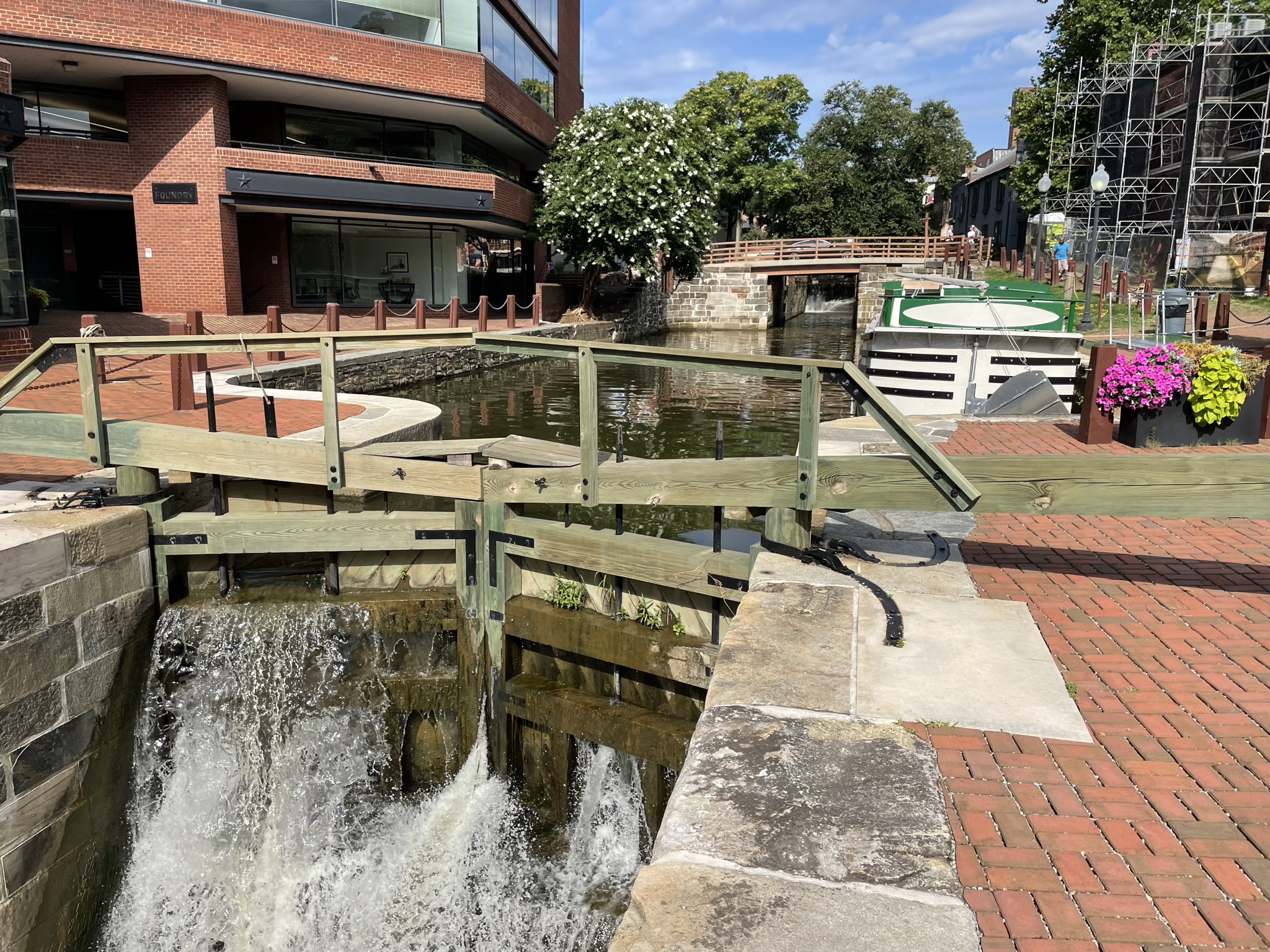
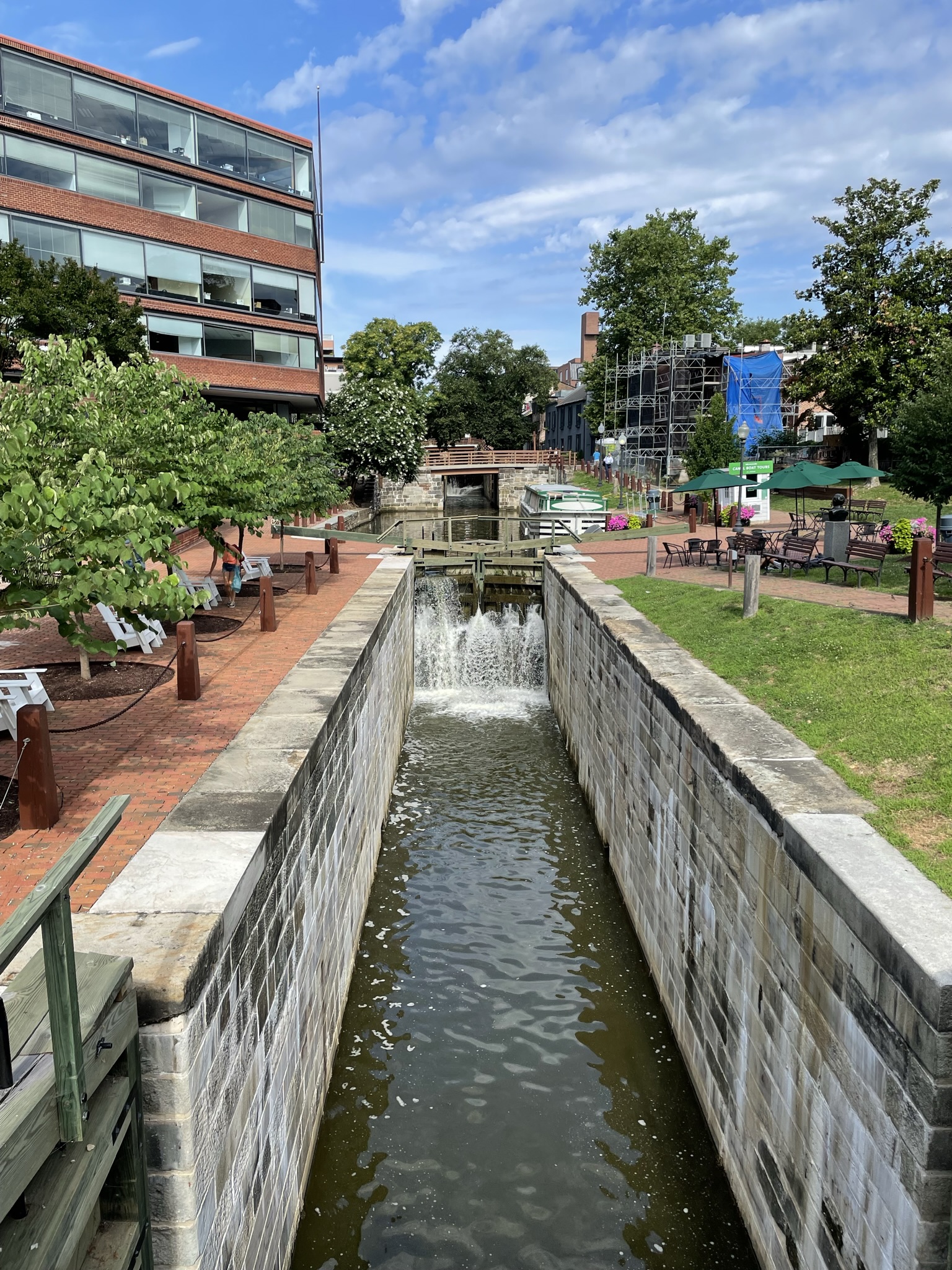
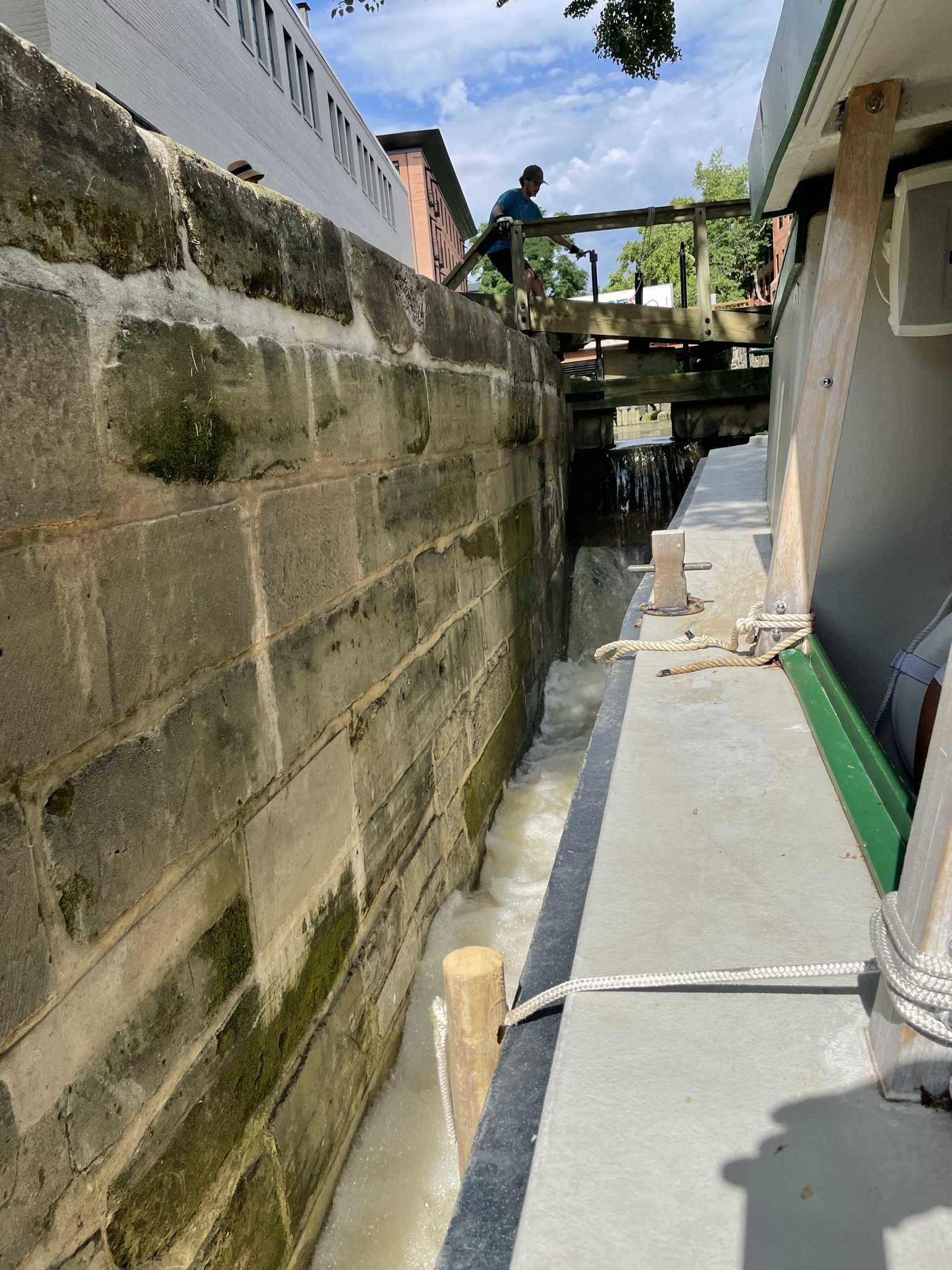
Not being one to pass up a fun boat ride, I jumped on the chance to check out the new canal barge on one muggy day in July. I made my way to Lock 3 and there it was: the long, narrow packet boat, cheerfully painted in green and white.
A young woman in a straw bonnet and long calico skirt served as our docent. She took her audience of about 50 passengers back in time as she told the history of the canal. Pacing up and down the aisle between the wooden benches, she told tales like the one of James Curry, who escaped slavery in North Carolina and worked his way to freedom in 1837 on a barge like the one we were on.
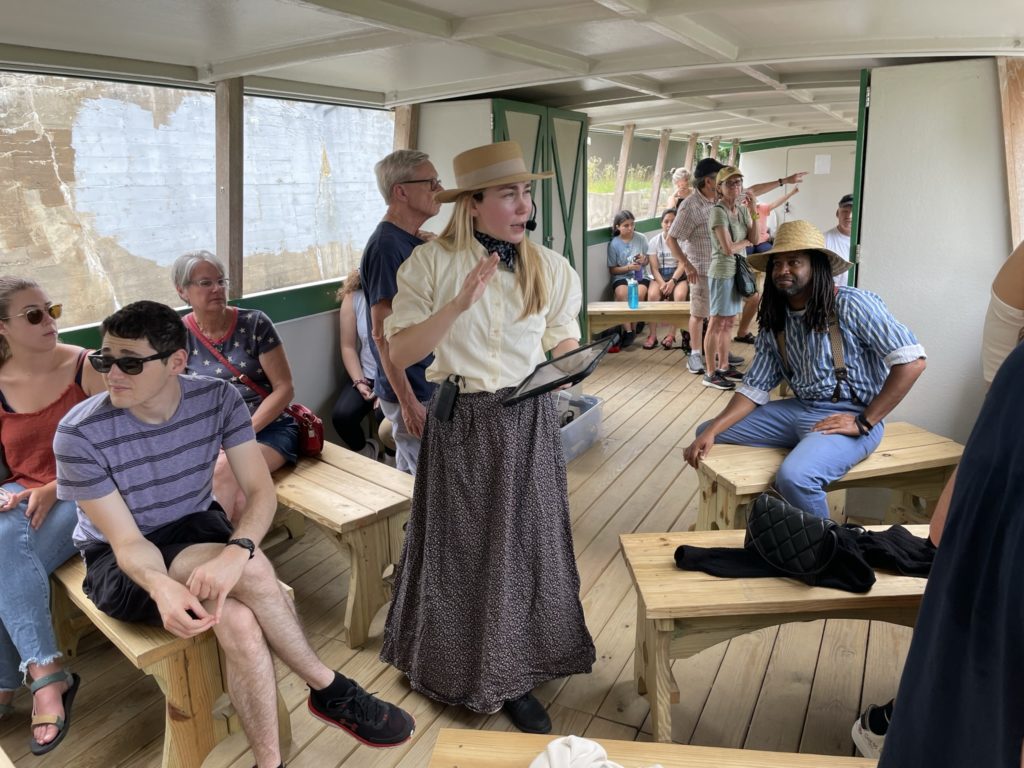
The four locks that connect the Potomac River with Rock Creek are the heart of the canal in D.C. There were originally 74 locks that allowed boats to rise the 605-foot difference in elevation between Georgetown and Cumberland. The Washington Monument, by contrast, is only 555 feet tall.
Lock 3 is where the new canal boat is docked and where the existing National Park Service visitor center is located. Our tour began with a lift in the lock. The captain squeezed the boat in between the high rock walls, with seemingly only centimeters to spare on either side. Two costumed staffers closed the huge wooden gates at the downstream side, and water began to gush into the lock, slowly raising the hull about 7 feet.
Once the water became level with the upper portion of the canal, the staffers opened up the massive upstream gates and we edged our way toward the Key Bridge. Modern-day canal boatmen in matching blue T-shirts worked the packet boat as their predecessors must have done in the past, using long wooden poles as bow thrusters, pushing the hull away from the stone-lined edges of the narrow ditch. This replica barge has modern amenities and materials, including an onboard restroom and a 20 kw electric motor at each end of its fiberglass-andcomposite foam hull. During the voyage, the guide gave her passengers a background history of the canal.
The race to settle the West started with two shovels full of rocky dirt in two different locations on the same day: July 4, 1828. One shovel, wielded by 91-yearold Charles Carroll of Carrolton, the oldest living signer of the Declaration of Independence, broke ground for the B&O Railroad in Baltimore. The other shovel, plied by 61-year-old John Quincy Adams, then the sixth President of the United States, launched the C&O Canal at Little Falls, Md.
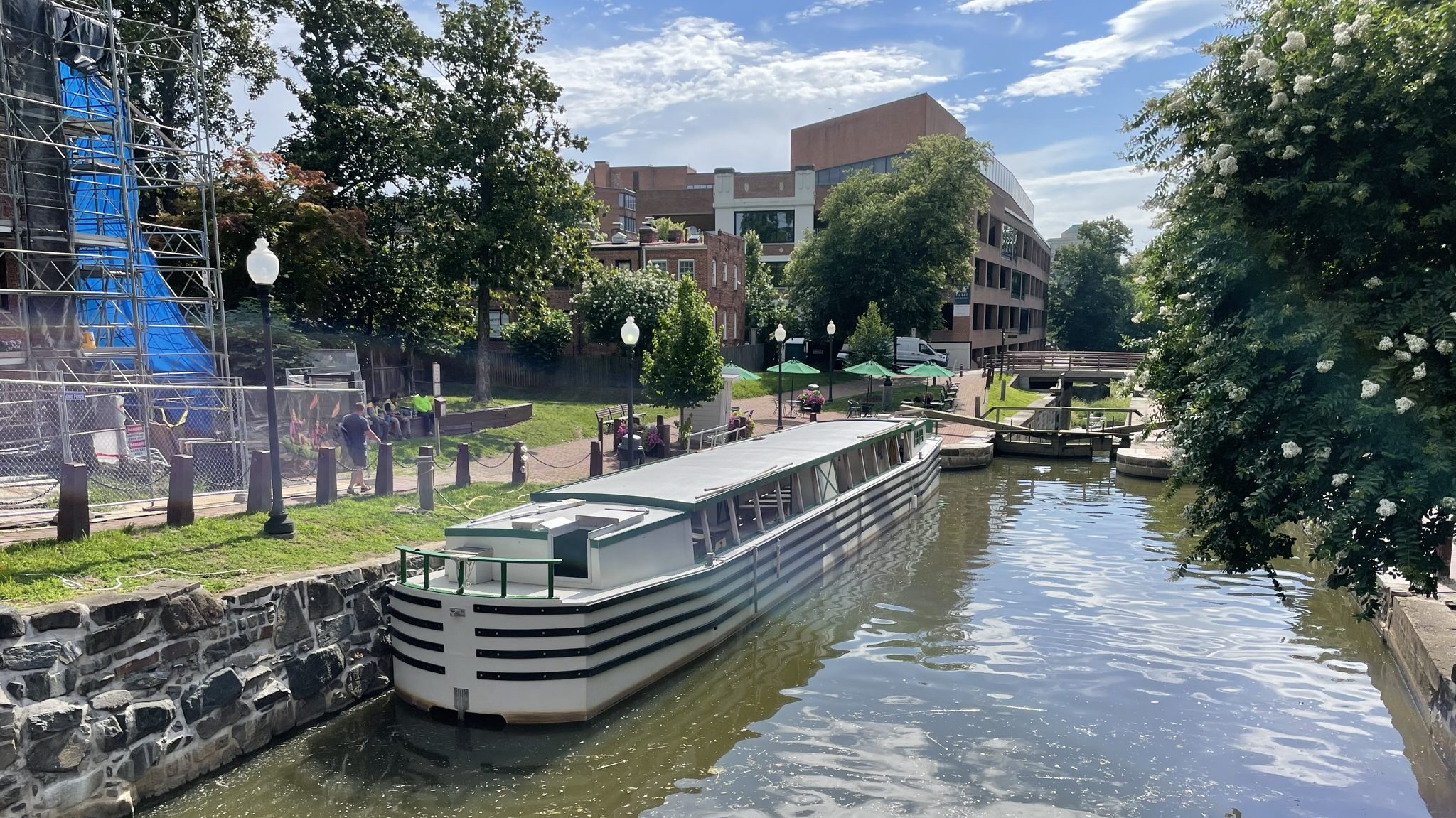
The race was to see which mode —water or rail—would prove to be the most economical means of transporting raw goods and people between the Chesapeake Bay and the Ohio River, somehow overcoming the 3,000-foot elevation of the Allegheny Mountains. The Chesapeake & Ohio Canal would parallel the north bank of the Potomac River to Cumberland, Md. The Baltimore & Ohio Railroad would begin along the Patapsco River Valley, hop across the Potomac at Harper’s Ferry, and run up the southern bank of the river to Cumberland and then on to Wheeling on the Ohio River in what is now West-by-God-Virginia.
Curiously, while mules hauled packet boats up and down the canal, for the first year or so of its existence, the carriages on the railroad were drawn by horses. When the first steam locomotive, known as “Tom Thumb,” proved its mettle in 1830, the future of the canal was doomed. Still, the race lumbered on for another 100 years. It took until 1850 for the C&O Canal to stretch its full 184.5 miles from the Georgetown neighborhood of Washington, D.C., to Cumberland. The railroad passed there eight years earlier and reached Wheeling in 1853.
Flooding was a perennial problem, and the Great Johnstown Flood in 1887 devastated the whole Potomac River valley, leaving the canal in ruins. It never fully recovered and virtually shut operations by 1924. The federal government bought it in the 1930s and the Civilian Conservation Corps did a lot of restoration to the works along stretches of the canal. It became a National Historical Park in 1971.
Once we reached Key Bridge over the Potomac River, the captain stopped the boat, walked its 80-foot length across the cabin top and took the helm at the opposite end. What had been the bow became the stern. The boat reversed its course and returned to Lock 3. The ride along the canal provides a serene contrast to Washington’s other tourist attractions, and the experience of rising through the lock was intensely satisfying.
The boarding area is located at C&O Canal Lock 3, along the Canal towpath between Thomas Jefferson and 30th Streets NW. Tours run four times a day. To make reservations, see georgetownheritage.org/boat-tours.

